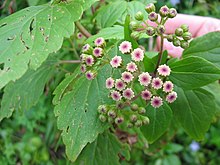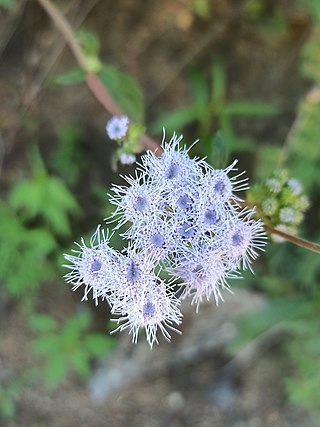
Ageratum is a genus of 40 to 60 tropical and warm temperate flowering annuals and perennials from the family Asteraceae, tribe Eupatorieae. Most species are native to Central America and Mexico but four are native to the United States.
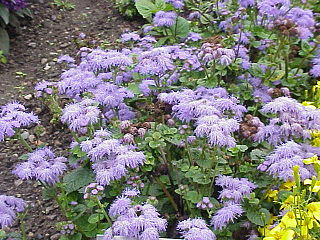
Eupatorieae is a tribe of over 2000 species of plants in the family Asteraceae. Most of the species are native to tropical, subtropical, and warm temperate areas of the Americas, but some are found elsewhere. Well-known members are Stevia rebaudiana, a number of medicinal plants (Eupatorium), and a variety of late summer to autumn blooming garden flowers, including Ageratum (flossflower), Conoclinium (mistflower), and Liatris.

Critonia is a genus of flowering plants in the tribe Eupatorieae of the family Asteraceae.

Fleischmannia is a genus of flowering plant in the family Asteraceae. The name honours Gottfried F. Fleischmann (1777–1850), the teacher of Carl Heinrich Schultz at University of Erlangen–Nuremberg. Members of the genus are native to South, Central, and North America, with some species found as far north as Virginia and Illinois. They are commonly known as thoroughworts.

Pentacalia is a genus of flowering plants in the family Asteraceae. About 34 members of this genus appear to be located in the South American county Ecuador, where they are threatened by habitat loss. The genus contains approximately two hundred species, which are distributed from Mexico to northern South America.
Phalacraea is a genus of South American plants in the tribe Eupatorieae within the family Asteraceae.

Viguiera is a genus of flowering plants in the family Asteraceae. It contains around 19-40 species, which are commonly known as goldeneyes and are native to the New World. These are herbs to bushy shrubs that bear yellow or orange daisy-like flowers.
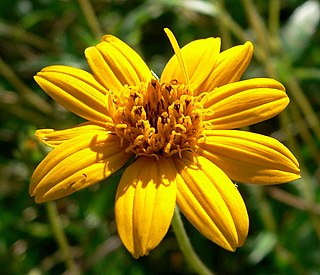
Wedelia is a genus of flowering plants in the family Asteraceae. They are one of the genera commonly called "creeping-oxeyes".

Pectis is a genus of flowering plants in the family Asteraceae described as a genus by Linnaeus in 1759.

Pseudognaphalium is a genus of flowering plants in the sunflower family. Members of the genus are commonly known as cudweeds or rabbit tobacco. They are widespread in tropical and temperate regions of many countries.
Oxylobus is a genus of Mesoamerican flowering plants in the tribe Eupatorieae within the family Asteraceae.

Psacalium is a genus of flowering plants in the sunflower family. Indianbush is a common name for Psacalium.
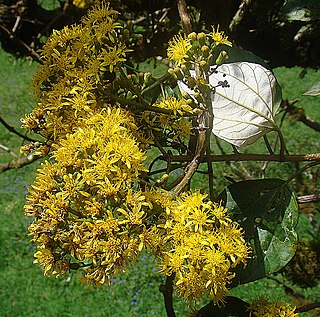
Sinclairia is a genus of Latin American plants in the tribe Liabeae within the family Asteraceae.

Montanoa is a genus of flowering plants in the tribe Heliantheae, within the family Asteraceae.

Vernonanthura is a genus of Neotropical plants in the tribe Vernonieae within the family Asteraceae.
